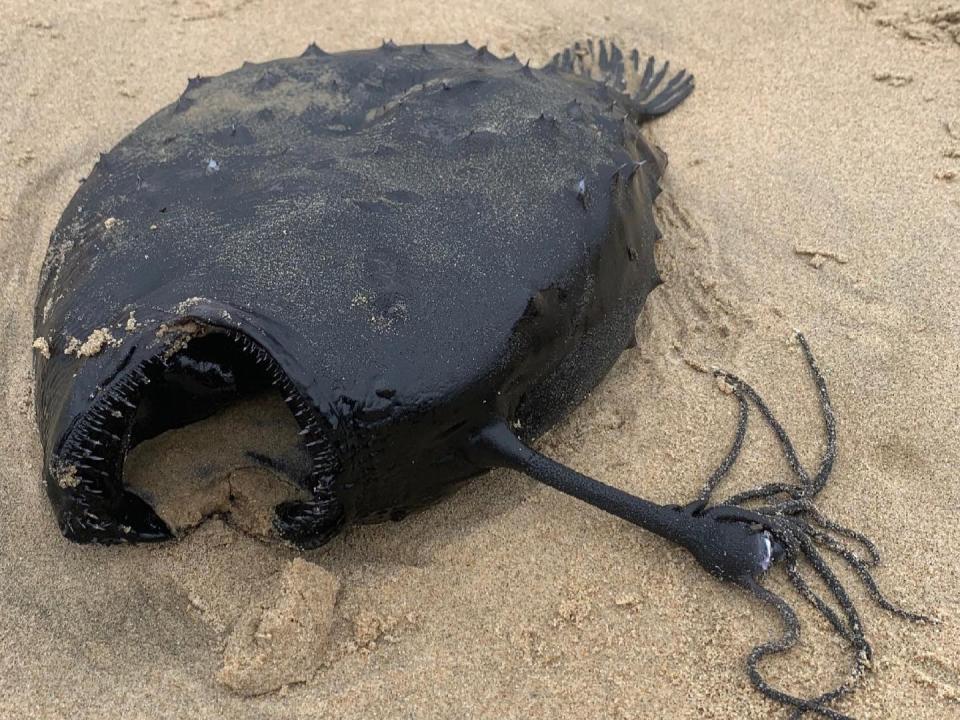The weird creatures washing up on US beaches this year

This ‘football fish’ was on a California beach last week.
(Crystal Cove State Park)The ocean is as mysterious as it is deep. And in the bottom reaches of its waters lurk some strange, sometimes frightening, and ultimately fascinating creatures.
Over the past few months, a number of flamboyant fish have washed ashore on US beaches, piquing the curiosity of locals and taking a star turn on social media.
Here are some of the weirdest creatures to wash up on shore so far this year.
Football fish
This rare fish was found on California beach on 8 May, and social media users were quick to point that this species was best known for its role in 2003’s Pixar classic Finding Nemo. It is usually found thousands of feet beneath the sea.
Females get up grow up to 24 inches in length, while males measure in much shorter. This particular fish was discovered on Newport Beach and is with the California Department of Fish and Wildlife. It’s expected to end up as part of an exhibit in a zoo.
Mystery fish
Wildlife officials on Cape Coral, a Florida city on the Gulf of Mexico, were stumped by the origins of this fish, as the species they first considered was ruled out. Initially, officials believed it was an arapaima, a large Amazonian river fish.
But those fish swim in fresh waters, not the ocean.
In February, local NBC2 journalists went along to help investigate and see if they could identify the fish, but they had no luck. Their report concluded that if anyone sees another mysterious fish, let local authorities know.
Hoodwinker sunfish
This one got the international marine biology community debating which species this big fellow actually was after being reported by USA Today in February, the first of his kind to be spotted in the Northern Hemisphere.
When the 7ft fish hit the shore in California, scientists thought he was an ocean sunfish. However, what became more important was its size, no matter what way you measured.
“Hola Mola mola,” the Facebook post by Coal Oil Point Reserve read, “It’s even taller (fin tip to fin tip) than it is long!”
However, Australian scientists saw the footage and corrected what those in Santa Barbara had labelled him.
Mariana Nyegaard of Murdoch University said, “I literally fell off my chair when I opened the first photo,” after she confirmed his true identity.
Eyeball fish
These bug-eyed chaps were recently found on the Texas shoreline, going by the scientific name of Rhizophysa eyesenhardt, last month.
They were posted online by Jennifer Baltazar, who believed they had hurt her son.
“That’s when I noticed it because I went looking for it what could’ve stung him,” she said to KSAT, a local news outlet.
The US National Park Service was the one to help Ms Baltazar give them a name.
“This one had us stumped for quite some time,” Mustang Island State Park said.
Read More
The Independent visits Heathrow ahead of international travel restarting

 Yahoo Finance
Yahoo Finance 